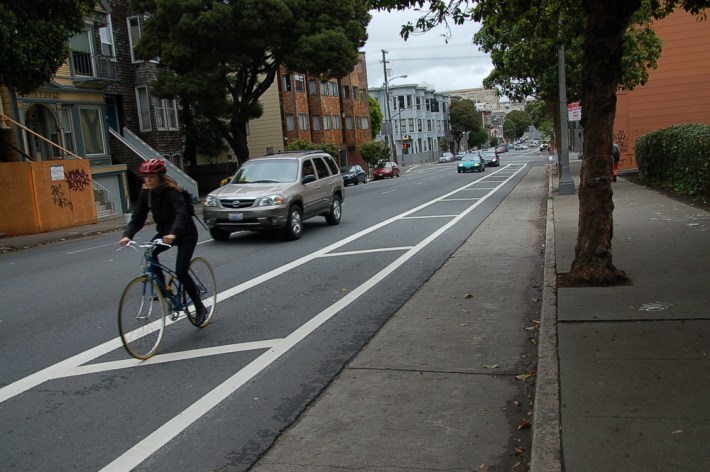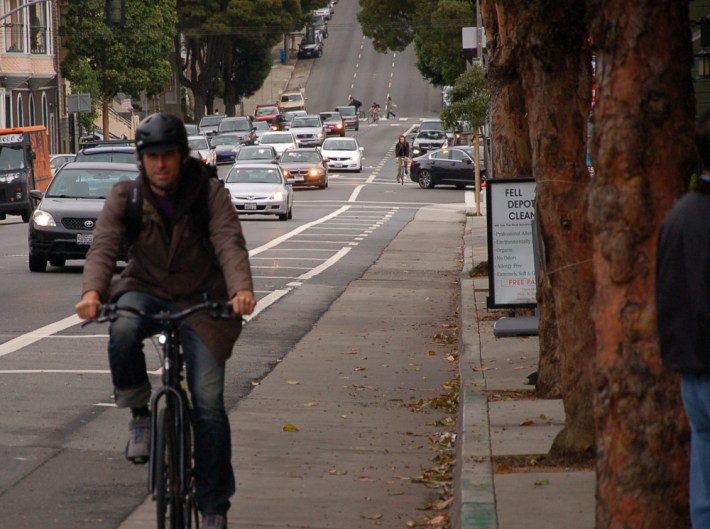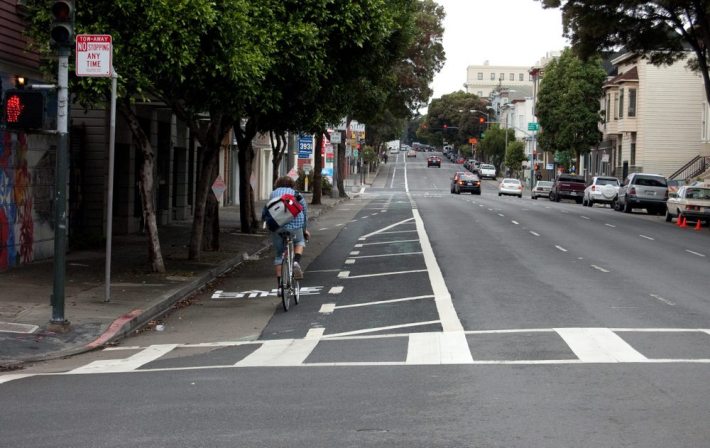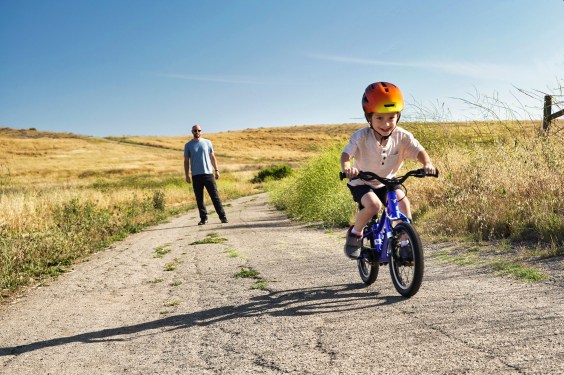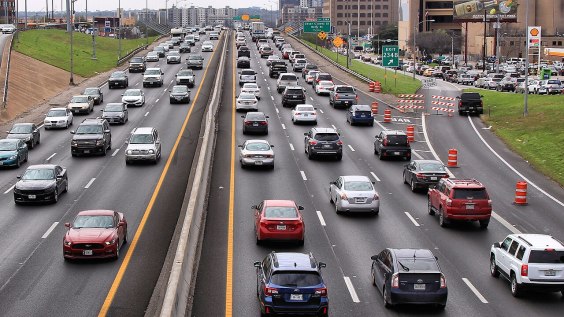The basic striping for a separated bike lane on Fell Street now links the Wiggle to the Panhandle, a milestone in the years-long campaign to make one of San Francisco's most important bicycle routes more appealing to all. Crews from the SF Municipal Transportation Agency yesterday striped the 5-foot buffer separating the bike lane from motor traffic, the most significant sign of progress yet on this long-awaited street safety project.
"We are extremely excited to see the Fell Street separated bikeway underway," said SF Bicycle Coalition Executive Director Leah Shahum. "This is a safety improvement project that is so crucial to the huge number of people who bike and walk along this corridor every day. The paint and buffer is a great step toward making this intimidating corridor safer, and we’re looking forward to the addition of the other pedestrian and bicycle safety improvements that are planned. We continue to applaud the SFMTA for taking biking, walking, and neighborhood safety seriously on Fell and Oak Streets."
The SFMTA plans to add bicycle stencils, intersection treatments, green paint in some areas, and eventually concrete barriers to complete the bike lane. The rest of the project's bicycle and pedestrian improvements will be added in the coming months, including a similar bike lane on the three parallel blocks of Oak Street, more visible crosswalks, and sidewalk extensions at 12 street corners. The sychronized traffic signal speed will also be lowered from 25 MPH to 20 MPH to calm car traffic, and dedicated bicycle signals will give bicyclists and pedestrians a head start to cross in front of turning vehicles.
Many bike commuters using the Fell lane so far have been seen riding close to, or even inside, the buffer zone. That may be due to the poor riding surface along the curb, which has for decades served as storage for cars, leaving the concrete bumpy in some areas. Or maybe it's just habit for those who grew accustomed to braving the old bike lane, which has now become the buffer zone.
"It seems like it's wide enough that the fast people can go to the right of the slower people," said SFMTA board member Cheryl Brinkman, who stopped to chat with Streetsblog as she made her way home along the Fell bike lane during yesterday's evening commute. "That's a great thing."
Once completed, the protected bikeways on Fell and Oak will help show that the city is "serious" about implementing the kind of bicycle infrastructure that cities like Copenhagen have successfully deployed to make bicycling a mainstream travel option, Brinkman noted.
Installing protected bike lanes often involves politically contentious decisions like removing car parking or traffic lanes, and a few persistent opponents have filed a legal appeal against the Fell and Oak project, which the SFMTA says it expects will be denied. But as Andreas Røhl, Copenhagen's bicycling program manager, put it at a recent forum in San Francisco: A city must provide continuous, safe bicycling conditions on every route — “From point A to point B, even where it hurts.”
For San Francisco to reach its official goal of 20 percent trips by bike by 2020, "We need this kind of infrastructure," said Brinkman.
The improved quality of Fell's bicycling facilities only reinforces the need to find a better solution to the queue of drivers who line up for fuel at the Arco gas station. In 2010 the SFMTA set aside space for drivers in the curb lane while directing cyclists around them. That configuration, which was put in place following protests from the group Fix Fell, improved the situation only slightly. For now, cars remain in a sanctioned queuing area, and often encroach on the sidewalk and a section of the bike lane dashed with green paint.
But with the new 7'3" curbside, separated bike lane from Scott to Baker Streets, "I really think we're going to have a flood of cyclists on the Panhandle, and a flood of cyclists, not just on the Wiggle, but on Market Street," said Brinkman, who added that the SFMTA should consider planning parking-protected bike lanes along the Panhandle to free up room on the existing path that's shared with pedestrians. "It's probably going to force us to step up our game in those areas to accommodate all those cyclists."
"People are going to get used to [the protected lane], and once we start doing a few of these, this is going to be what people expect," she added. "You whet their appetite for this kind of infrastructure."
